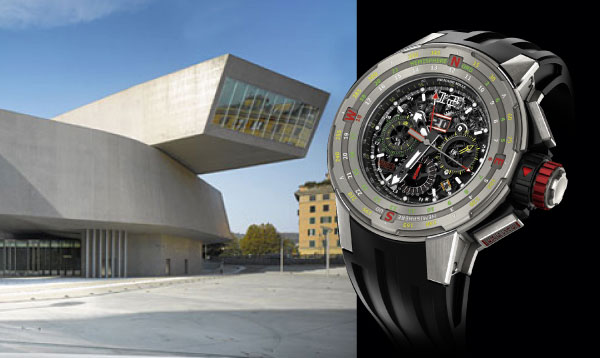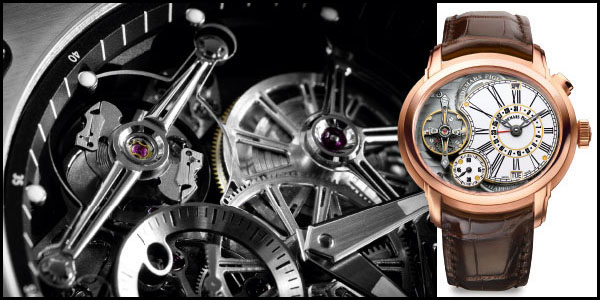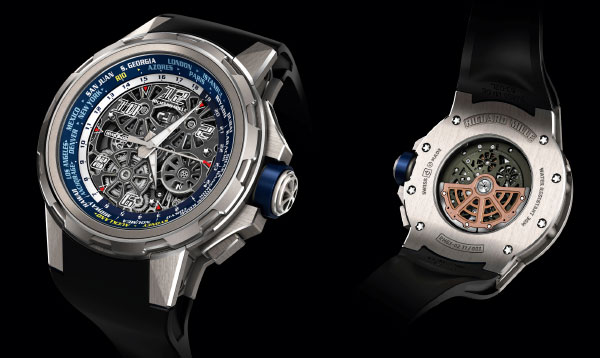
Flyback RM 60-01 Regatta Chronograph
Case : titanium Diameter : 50mm Movement : mechanical automatic, 55-hour power reserve Functions : central hours, minutes and seconds hands, minutes counter and countdown timer at 9 o’clock, hours counter at 6 o’clock, UTC display and variable geometry rotor Strap : rubber
While this new chronograph regatta will not surprise observers in terms of the impressive number of functions it provides, it is nonetheless a first for Richard Mille: this is the first time that the brand is offering a watch dedicated to sailing the high seas. Despite its apparently complex appearance, this flyback chrongoraph complete with an annual calendar, large date display and UTC displays is amazingly simple to operate. Its special rotating bezel bearing the four cardinal points and a 360° graduated disc with a 24-hour scale serves to calculate the wearer’s position based on just local time and the position of the sun. This useful function works in both the northern and southern hemispheres without any need for additional calculations.
Its architectural counterpart: the National Museum of the 21st century Arts, Rome, by Zaha Hadid
The National Museum of the 21st century Arts is a foundation created by the Italian Ministry for Cultural Assets and Activities. It is the first national institution devoted to contemporary creativity and designed like a large campus for culture. It houses two museums : the MAXXI Art and the MAXXI Architecture.
The program of activities – exhibitions, workshops, conferences, laboratories, shows, screenings, training projects – reflects MAXXI’s vocation to serve not only as a place in which to preserve and showcase a cultural heritage, but also and above all as a laboratory for experimentation and cultural innovation, study, research and production of aesthetic content of our time.
The two museums – MAXXI Art and the MAXXI Architecture – are located around a large full-height space which gives access to the galleries housing permanent collections and temporary exhibitions, the auditorium, welcome services, a cafeteria and a bookshop.
The space is built in such a way that the route is not linear, but on the contrary offers different alternatives which mean that visitors never have to retrace their steps and can enjoy openings onto the architecture, the works and the city. The mastery of natural light allows for a succession of different atmospheres.
Like the watch, the museum is identified through an overview of the building elements – curvilinear arrangements that command attention and distract from the activity going on in the building. Placing the function of the object in the background, the aesthetic design asserts its presence and cleverly refers to artistic expressions of modernist movements in which visual appearances are characterized by a certain stimulating unpredictability and controlled chaos.






